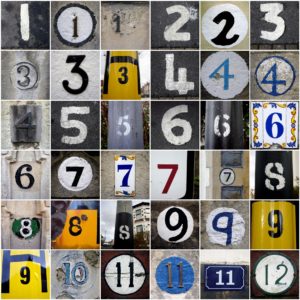Some p eople, including beekeepers, view swarming as a scary event. It really is a sign of a healthy colony. As beekeepers it is our role to educate others on why bees swarm, and do what we can to minimize negative reactions to our beloved hobby.
eople, including beekeepers, view swarming as a scary event. It really is a sign of a healthy colony. As beekeepers it is our role to educate others on why bees swarm, and do what we can to minimize negative reactions to our beloved hobby.
 eople, including beekeepers, view swarming as a scary event. It really is a sign of a healthy colony. As beekeepers it is our role to educate others on why bees swarm, and do what we can to minimize negative reactions to our beloved hobby.
eople, including beekeepers, view swarming as a scary event. It really is a sign of a healthy colony. As beekeepers it is our role to educate others on why bees swarm, and do what we can to minimize negative reactions to our beloved hobby.Keep a copy of our swarm list handy and share with your friends and neighbors in case help is needed in capturing a swarm.
As a reproductive event, a healthy hive throws a swarm and a single colony becomes 2 colonies. It is important to learn the signs of swarm preparation. You can read more on our swarm management handout here in addition to the below.
Conditions ripe for a swarm:
Bees will swarm if the brood area becomes too crowded. The brood nest is crowded when the bees run out of empty comb above the brood chamber to store nectar, and they resort to storing it in the brood nest (commonly called “backfilling”). The result is a queen that has nowhere to lay eggs.
Avoid overcrowding by ensuring the brood area does not become congested. Add second brood box and/or a honey super if an inspection indicates crowding in the brood area. With too much honey and pollen in the brood nest there is no place for the queen to lay. Help her out by replacing one or more honey frames with empty foundationless frames which give the colony more space to cluster near the queen. Also you can add a slatted rack which provides space for the bees to cluster under the brood nest.
A space management technique suggested by Michael Bush is to remove one frame and insert two follower boards placed in frame positions 1 and 8 for 8-frame setup or 1 and 10 frames in a 10-frame setup. The follower boards take up the space of one frame and the bees will cluster on them, which again places them near the brood. A follower board is made by creating a ¾” top bar with a sheet of plywood or Masonite cut to the size of a frame and attached to the top bar
If a hive has a bottom entrance foragers have to travel through the brood nest to store the nectar. Create a top entrance to minimize the congestion. This can be done simply by placing the inner cover so the notch faces down. If your inner covers do not have a notch, create one.
Have you ever wondered how a honey bee egg becomes an adult bee?
There are five stages called instars. Newly laid eggs, about the size of a small grain of rice, are held upright in the cell with glue – homemade! Creation of the first instar occurs when the house bees feed the egg royal jelly. The larvae grow quickly through the 5 stages in six days and are then ready to pupate. They stand up in the cell and prepare to spin their cocoon. House bees begin covering the cells with a mixture of beeswax and propolis. (Enter the female varroa mite to parasitize the larvae.) Twenty one days from the beginning the bee emerges as an adult worker; day 16 for a queen; and 24 days for a drone.
If you installed a package of bees this year, the queen has been released by now and egg laying starts within a week. Look for eggs in the center two or three frames. If you don’t find any look at all the frames that have some comb built on them. Eggs are almost the color of new wax so can be difficult to spot.
If you are feeding sugar syrup continue to do so because the bees have little chance to build reserves. If you don’t find any eggs take note of the buzzing sound a queenless hive makes and contact the business that sold you the bees. They may offer a free replacement. If you find the queen and another inspection reveals no eggs then she should be replaced.
Bees foraging for pollen will found it in dandelions, pussy willow, flowering quince, tulip tree, and various fruit trees. Nectar sources of interest in May are clover, blueberry and huckleberry, wild geranium, Hawthorne, and Black Locust. Flowers don’t produce nectar until the pollen is mature so bees have contact with pollen for a long time. Pollen grains have a slight negative charge and bees have a slight positive charge so the thousands of multi-branched hairs on a bee easily collect the pollen. The foragers clean most of the pollen out of their hair using their legs and carries the pollen home packed in their pollen baskets called corbiculae. Pollen is the only source of protein, starch, fat, vitamins, and minerals in a colony’s diet.
Bee Facts:
Nectar in the honey stomach weighs 25-40 mg.
Full load of nectar is 50-85% of body weight, around 30 mg of nectar
Nectar in the honey stomach weighs 25-40 mg.
Full load of nectar is 50-85% of body weight, around 30 mg of nectar
*Bee Facts are from “The Beekeeper’s Handbook” by Samataro and Avitabile.